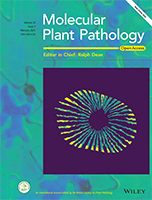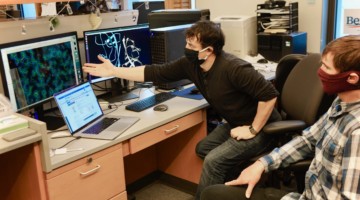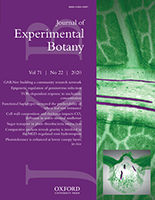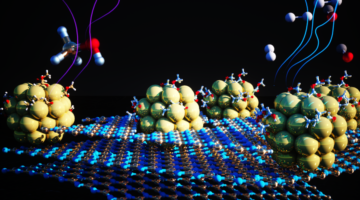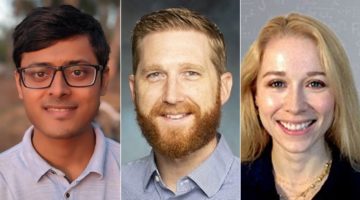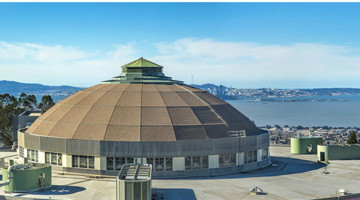During Pierce’s disease, Xylella fastidiosa triggers transcriptional changes in grapevines and induces major physiological responses, including tylose formation and starch depletion. X-ray computed microtomography and a machine-learning algorithm were used to track the depletion of starch reserves in the xylem of a grapevine stem infected with Pierce’s disease. Read more »
All News & Updates
A 1-Atom-Deep Look at a Water-Splitting Catalyst
X-ray experiments revealed an unexpected transformation in a single atomic layer of a material that contributed to a doubling in the speed of a chemical reaction—the splitting of water into hydrogen and oxygen gases. This process is a first step in producing hydrogen fuel for applications such as electric vehicles powered by hydrogen fuel cells. Read more »
The Odd Structure of ORF8: Scientists Map the Coronavirus Protein Linked to Immune Evasion and Disease Severity
Researchers determined the atomic structure of a coronavirus protein thought to help the pathogen evade and dampen response from human immune cells. Researchers determined the atomic structure of a coronavirus protein thought to help the pathogen evade and dampen response from human immune cells. Read more »
Functionalization of Benzotriazole-Based Conjugated Polymers for Solar Cells: Heteroatom vs Substituents
Understanding the structure-property relationship is important when designing new conjugated polymers for high-efficiency polymer solar cells. Rech et al. systematically explore the impact of a variety of functional groups, including nitrogen heteroatoms, fluorine substituents, and cyano groups. Read more »
Unique X-Ray Microscope Reveals Dazzling 3D Cell Images
Researchers used soft x-ray tomography to reveal never-before-seen details about insulin secretion in pancreatic cells taken from rats. By quantifying subcellular rearrangements in response to drugs, the results are an important first step for bridging the longstanding gap between structural biology and physiology. Read more »
Coordinated decline of leaf hydraulic and stomatal conductances under drought is not linked to leaf xylem embolism for different grapevine cultivars
Drought decreases water transport capacity of leaves and limits gas exchange, which involves reduced leaf hydraulic conductance (Kleaf) in both the xylem and outside-xylem pathways. We combined Kleaf and gas exchange measurements, micro-computed tomography of intact leaves, and spatially explicit modeling of the outside-xylem pathways to evaluate the role of vein embolism and Kleaf in the responses of two different grapevine cultivars to drought. Read more »
Speeding Toward Improved Hydrogen Fuel Production
Researchers synthesized a material that speeds up one of the limiting steps in extracting hydrogen from alcohols. The catalyst cleanly and efficiently accelerates the removal of hydrogen atoms from a liquid chemical carrier. The material is robust, made from earth-abundant metals, and will help make hydrogen a viable energy source for a wide range of applications. Read more »
New UEC Members for 2021
Welcome to the new Users’ Executive Committee members for 2021! Rourav Basak (UCSD), Eric Meshot (Lawrence Livermore National Lab), and Inna Vishik (UC Davis) will be joining the UEC in January. Read more »
ALSHub Makeover: New Portal Experience for Users
The Advanced Light Source (ALS) will replace the current ALSHub before the holidays. Preview the new portal, learn how to link your ORCiD and ALS accounts, and learn how this will enable remote access in the future. Read more »
December 2020 Awards and Achievements
Congratulations to the ALS team members on your many accomplishments and contributions! Read more »
- « Previous Page
- 1
- …
- 57
- 58
- 59
- 60
- 61
- …
- 139
- Next Page »
